Miami has the distinction of being one of the only major cities founded by a woman. No doubt this is due in part to the fact that the city is relatively young, but it’s still a pretty big accomplishment for a woman in the 19th century United States.
So without further ado, let me introduce our city’s mom: Julia Tuttle.
Hailing from Cleveland, Ohio, Julia Tuttle was a friend and correspondent of John D. Rockefeller (her father was Rockefeller’s first employer). Various sources indicate that she came to South Florida following the death of her husband in hopes of improving both her daughter’s health and her economic situation.
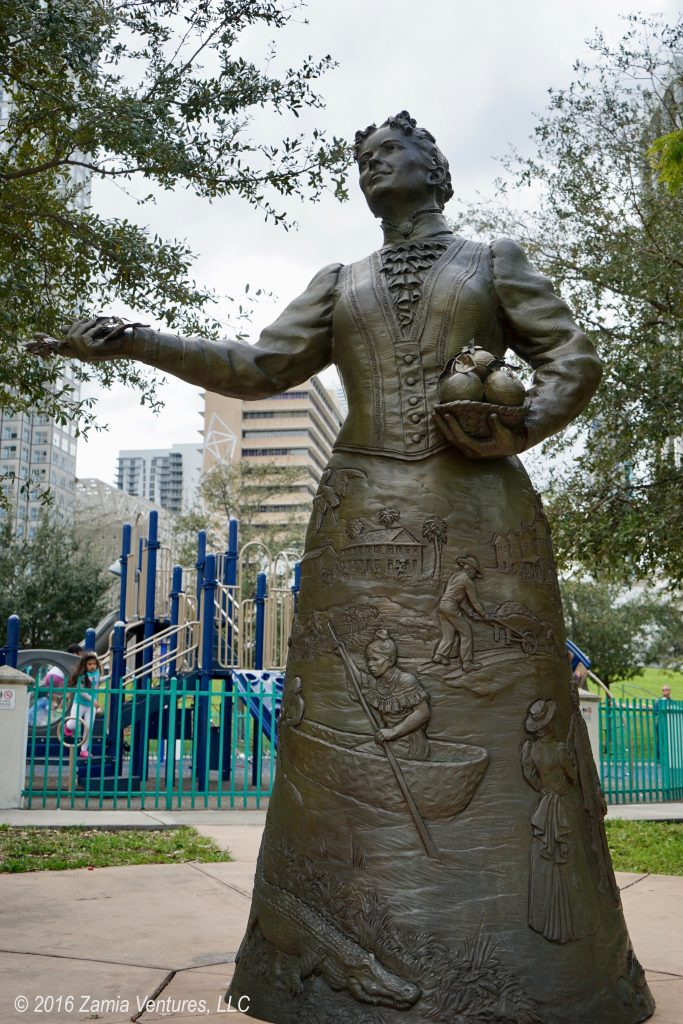
Upon arriving in the Biscayne Bay area, she found little more than a wilderness. A few family homesteads were scattered along the shore of Biscayne Bay, and there were fewer than 1,000 people living in the enormous area stretching along the Atlantic Coast from the Jupiter Inlet to Islamorada in the Keys.
However, she was not deterred. In 1891 she purchased a 640 acre tract on on the northern side of the Miami River — including the area that today is the central business district of Miami.
She was optimistic about the prospects for this remote but beautiful area. In correspondence, she wrote, “It may seem strange, but it is the dream of my life to see this wilderness turned into a prosperous country … as surely as the sun rises and sets all of this will come true.” This quotation was reproduced on the statue in Bayfront Park recognizing the contributions of the city’s founder.
Following an arctic freeze in the winter of 1894-1895 that destroyed virtually all of the citrus and other agriculture in the state, Mrs. Tuttle jumped on the chance to contact Henry Flagler — whose Florida East Coast Railway had by then reached Palm Beach. She is reported to have sent Flagler fresh orange blossoms or foliage to show that the freezes had not affected Miami.
More important than flowers — though orange blossoms do smell wonderful — Julia Tuttle made Flagler a savvy business offer. She offered to give the railroad half of her 640-acre property, including land for the railroad station and a large hotel, to secure Flagler’s agreement not only to extend the railway, but also to improve the town. Flagler and Tuttle cooperated to plan a cohesive road system throughout their alternating sections of land, and Flagler agreed to pave all of the roads and build a water plant and distribution system. Tuttle’s prescient negotiating, perhaps aided by fragrant flowers, laid the groundwork for the development of the city of Miami.
The rest is history. The first train steamed into Miami on April 13, 1896. Just months later, on July 28, 1896, the city of Miami was incorporated. By January 1, 1900, the city’s population had exploded to 1,681 people. There were plenty of ups and downs — to be explored in future posts — but Miami was on the path to becoming a great city.
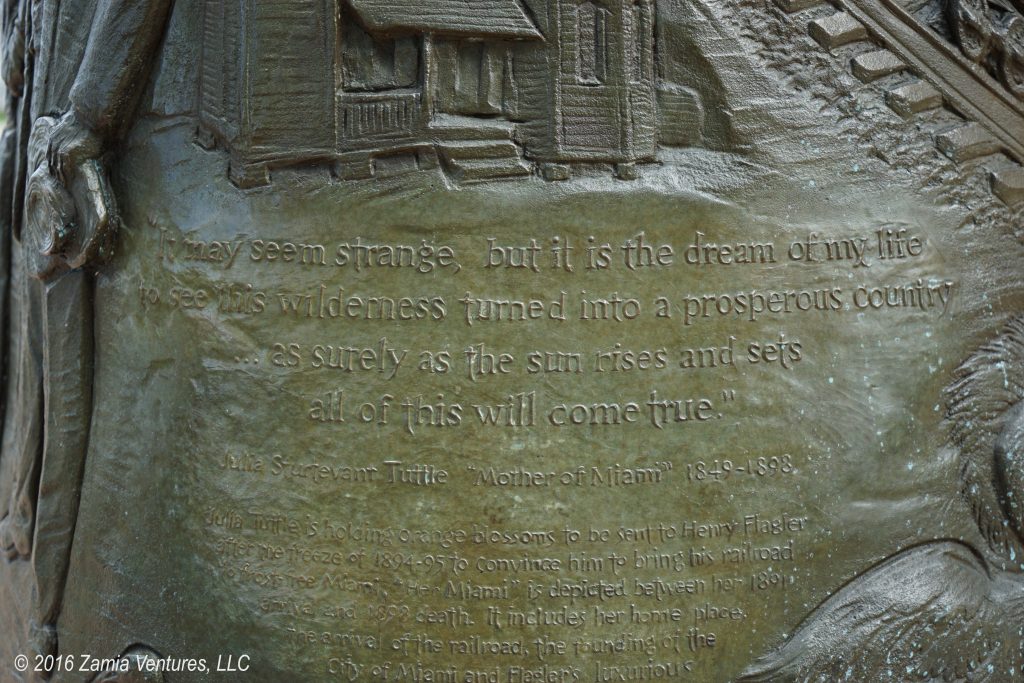
One surprising fact is how little of downtown Miami bears reminders of its founder, Julia Tuttle. Although the main street of Miami has been named Flagler Avenue since inception, there were no streets named after Julia Tuttle until a causeway across Biscayne Bay, part of Interstate 195, was named after her.
Her place in Miami history was finally recognized with the installation of a statue in Bayfront Park in 2010, where she gazes out across Biscayne Bay (map). The 10-foot high bronze includes many details in relief on her skirt — too crazy for 19th century fashion, but fun for history buffs — including depictions of her meeting with Henry Flagler, the train, and the Native Americans and wildlife that populated the area when she arrived.
She died in 1898 of sudden illness, so she was not able to see her work come to full fruition in the growth of her city. Remarkably, in a mere seven years of living in Miami, Julia Tuttle transformed the mouth of the Miami River from a sleepy trading post to the center of a major new American city. Fans can visit her grave at the historic City of Miami Cemetery where she is buried along with many other early Miami pioneers, including my own family.
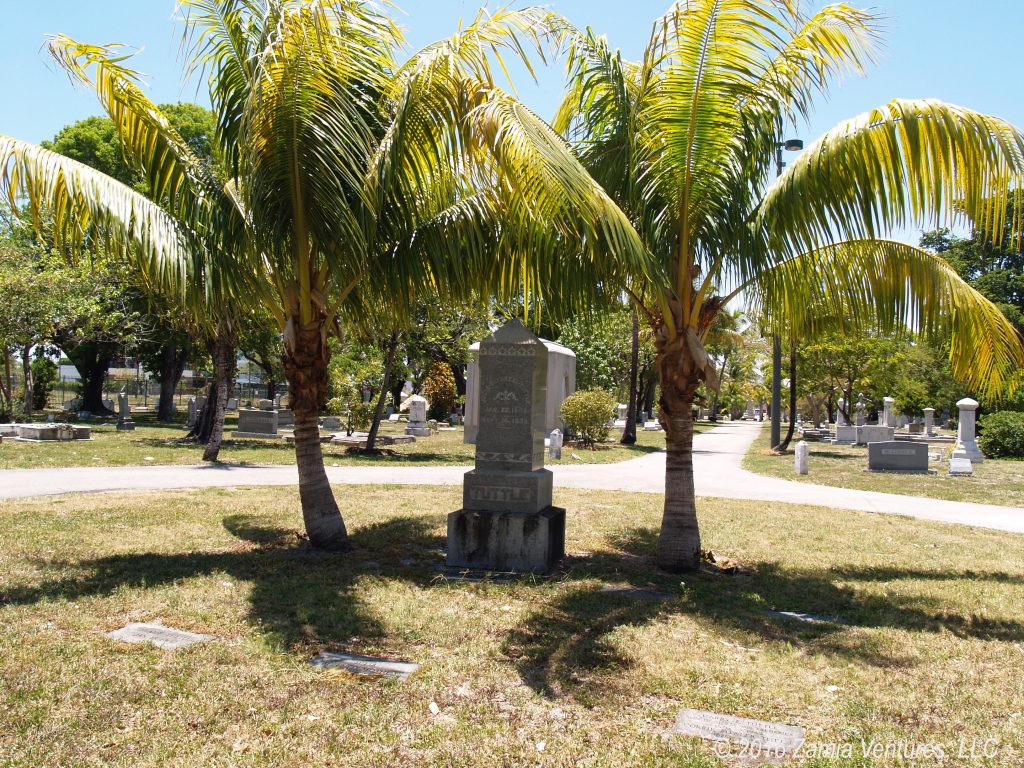
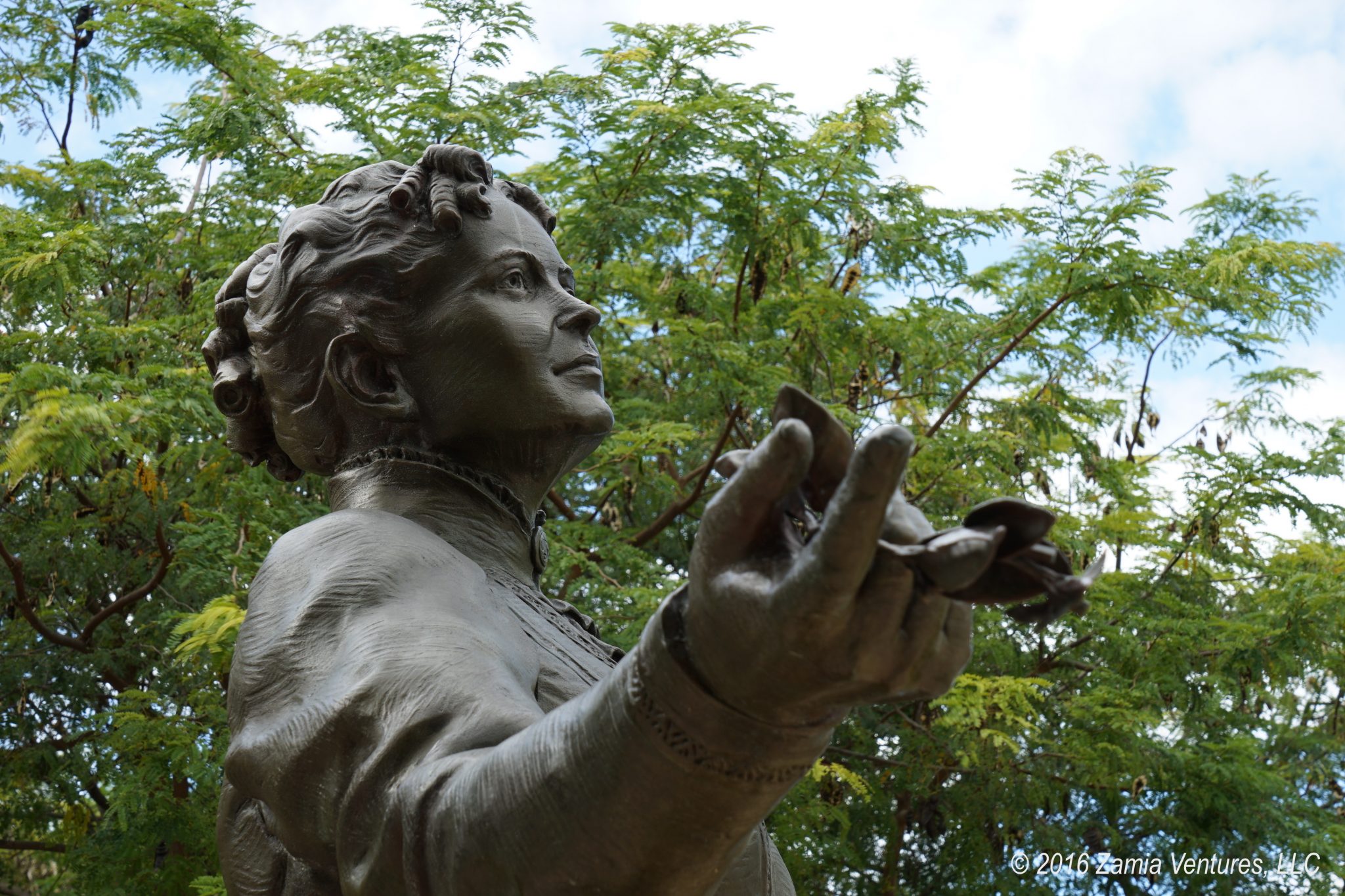
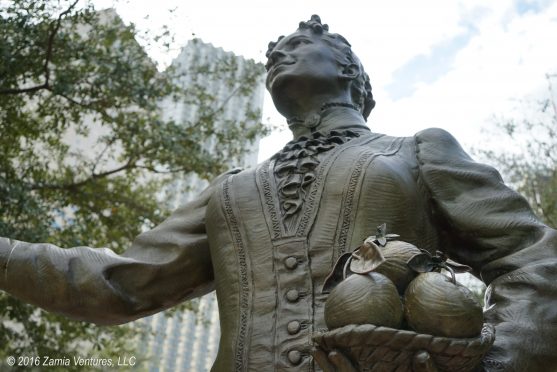
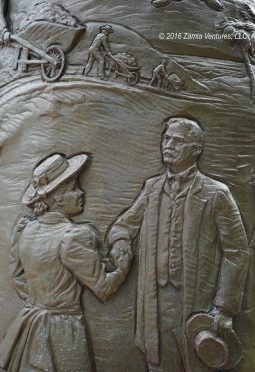
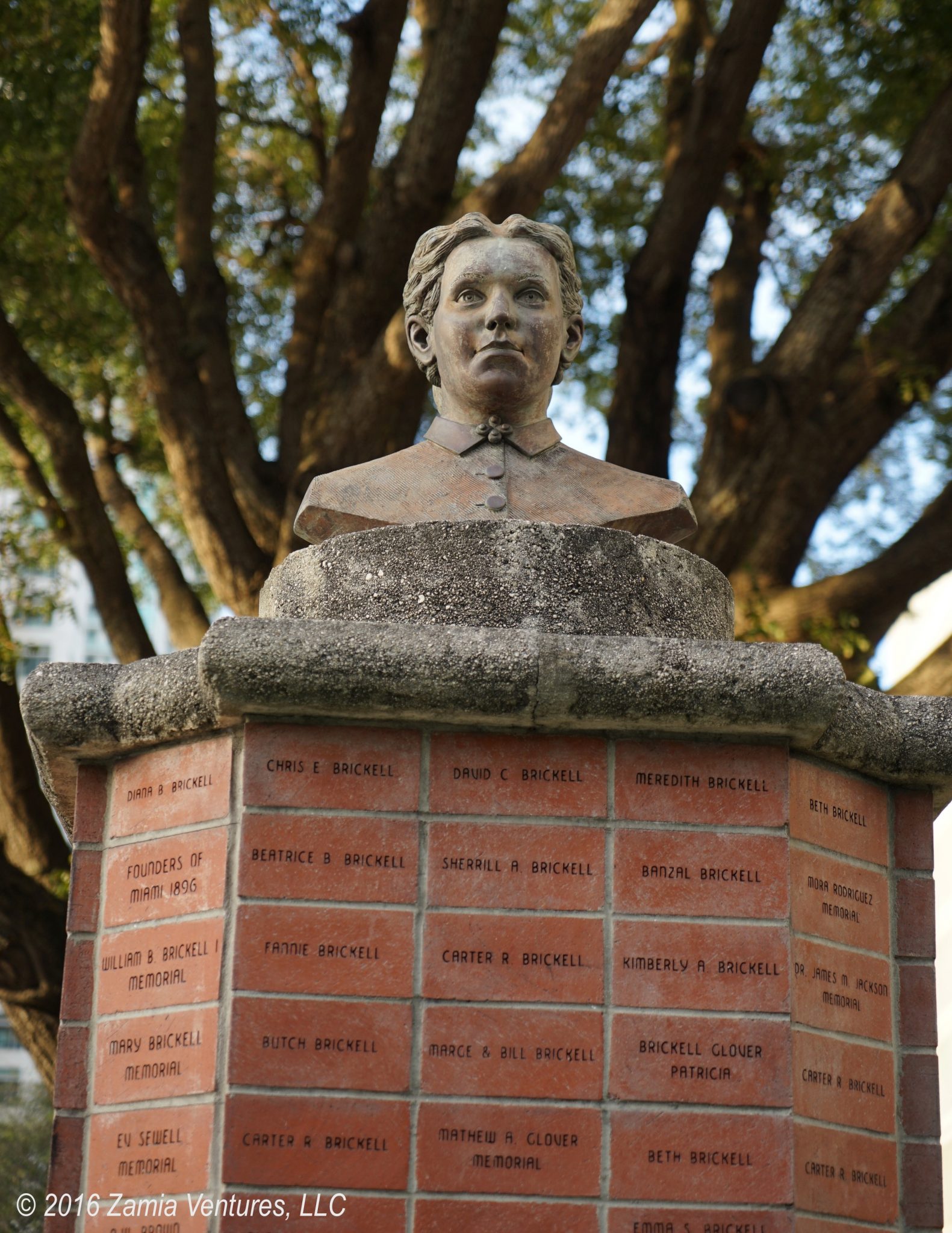
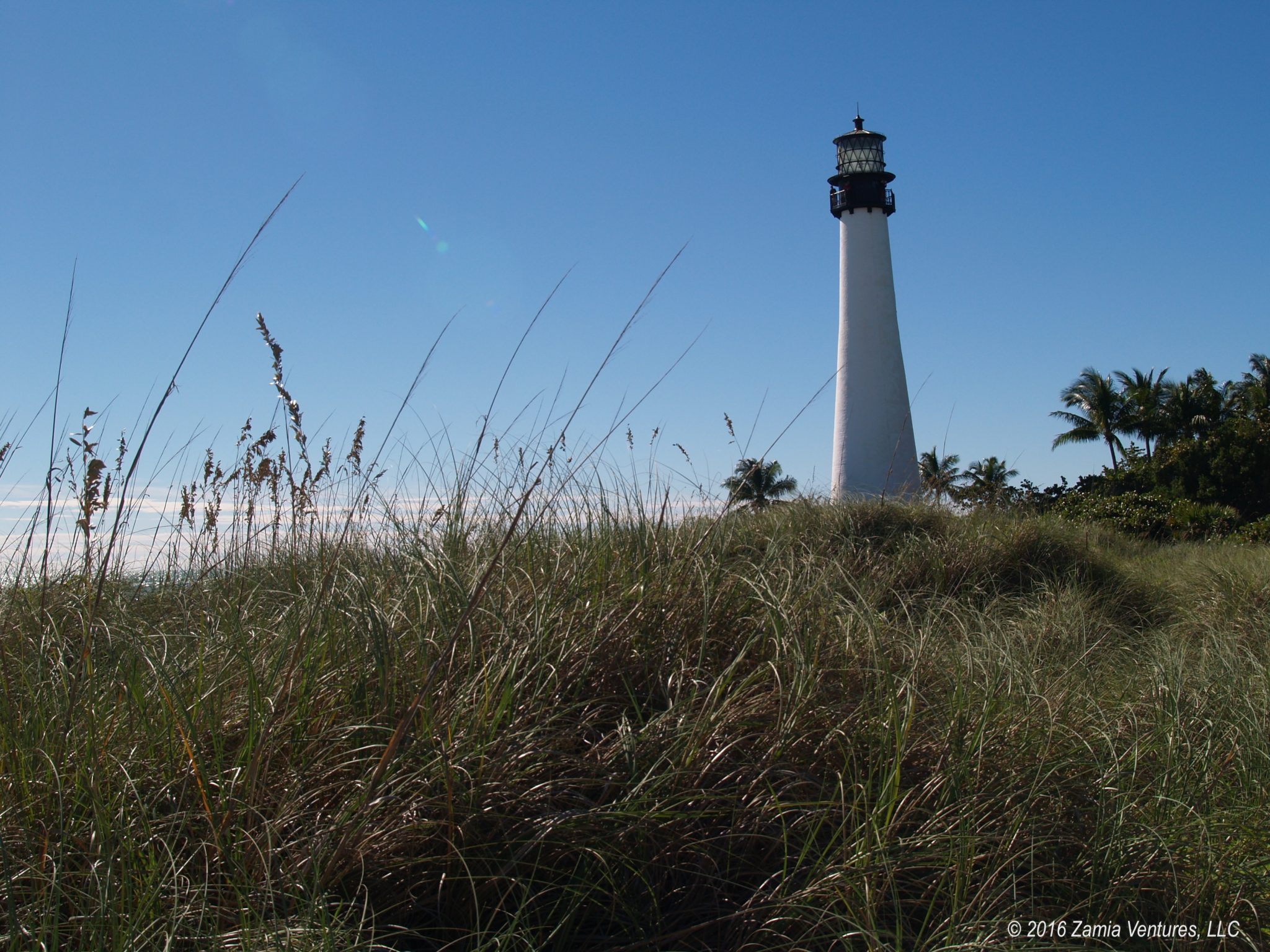
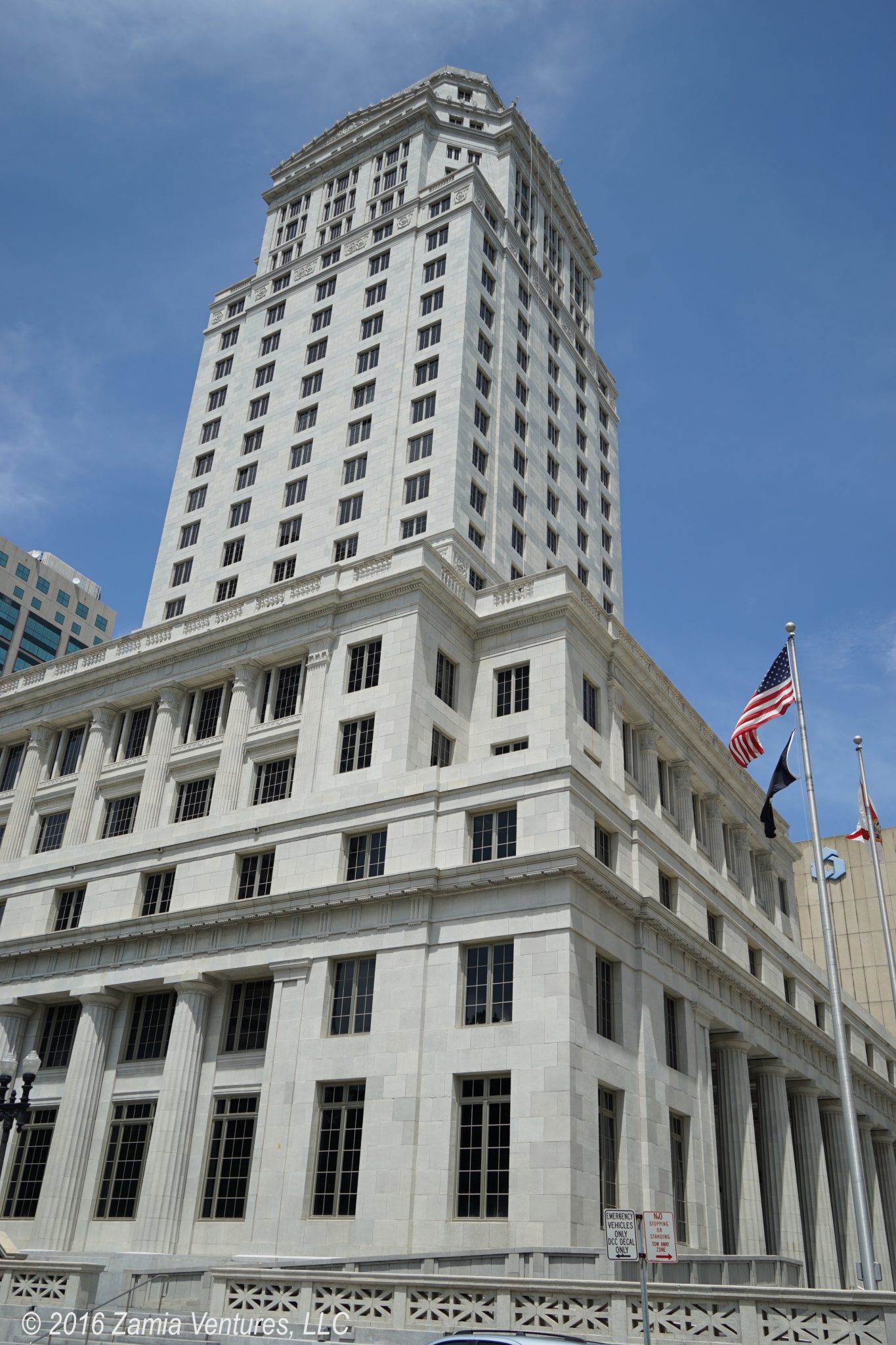
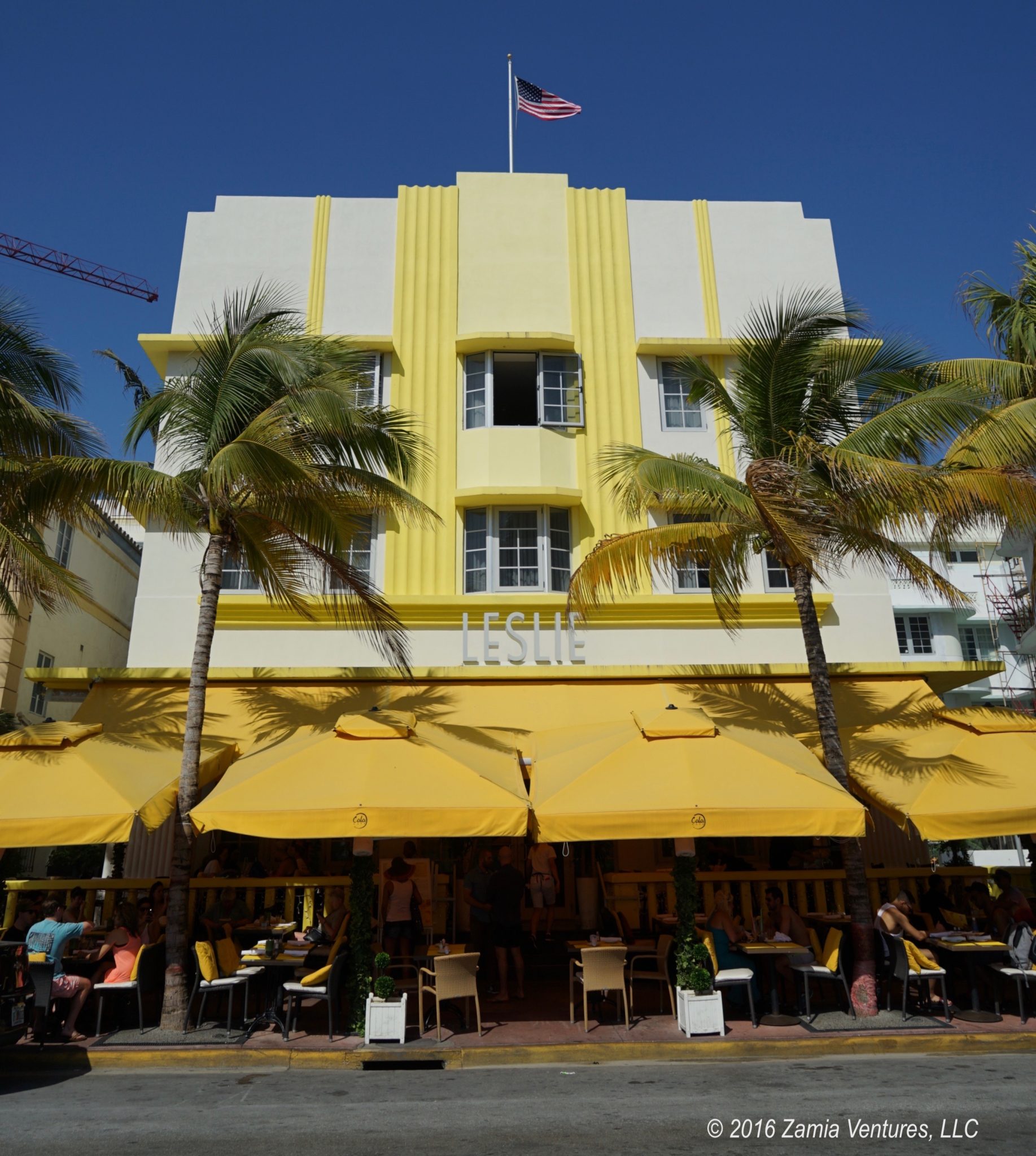
8 thoughts on “Miami Has a Mother!”